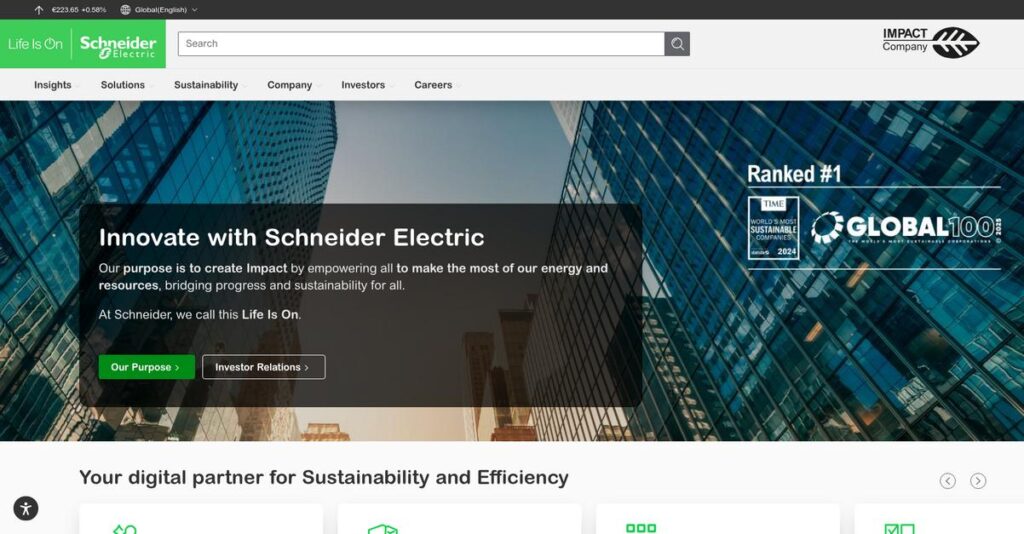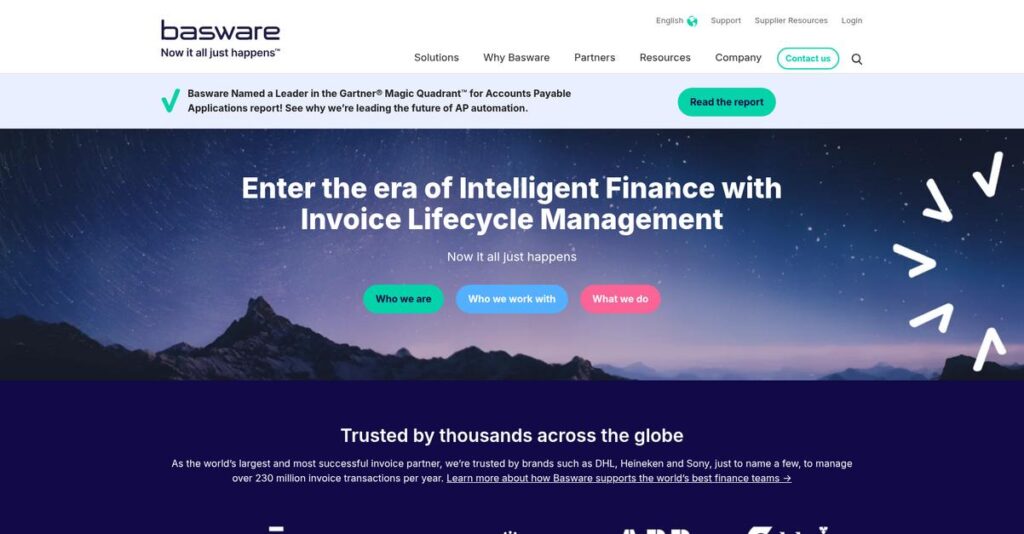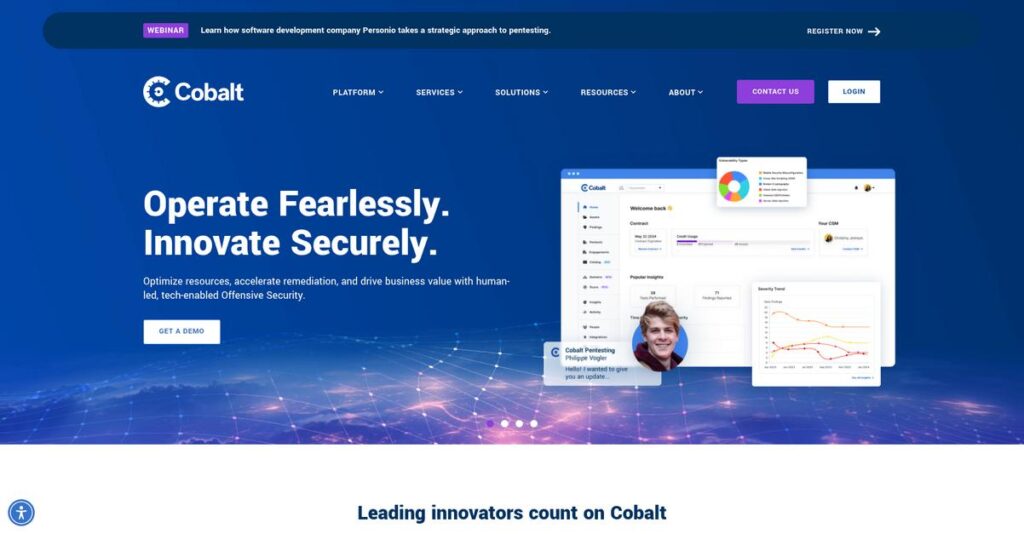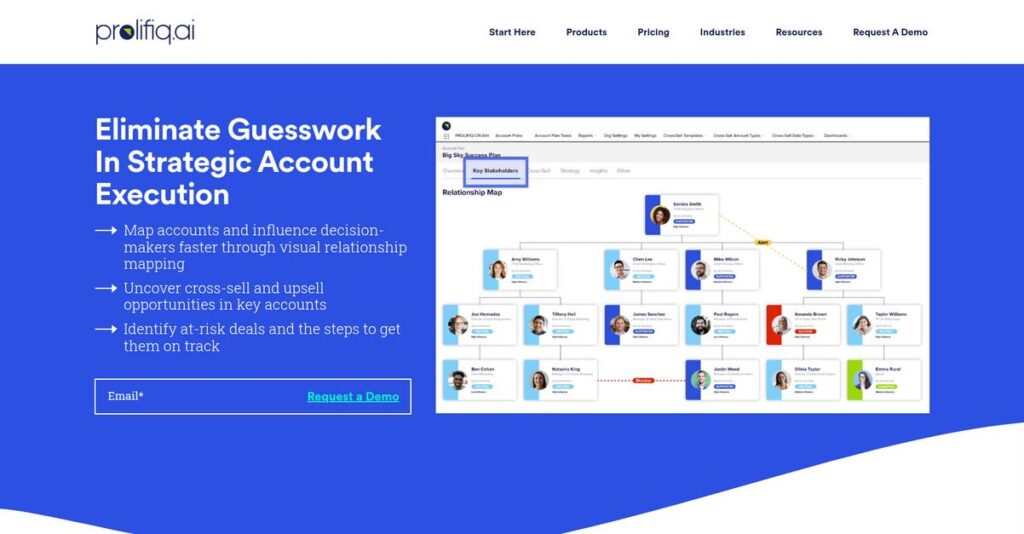Energy management doesn’t have to be overwhelming.
If you’re researching Schneider Electric, you’re probably looking to fix siloed systems, inefficiency, or manual processes that are slowing your building or industrial operations.
Let’s get real: disconnected tools are draining your resources daily, making it tough for you to hit your sustainability or efficiency targets—and honestly, it’s frustrating to chase scattered data instead of real results.
That’s where Schneider Electric stands out. Their EcoStruxure platform combines building management, energy analytics, automation, microgrid, and data center tools—all under one connected software suite. I’ve dug deep into how their modular, IoT-enabled architecture and new Zeigo Hub help you unify, track, optimize, and decarbonize every part of your energy and resource footprint.
This review will break down how Schneider Electric brings everything onto one platform for smoother control, more insight, and easier compliance.
In this Schneider Electric review, you’ll find honest analysis of their feature set, real-life use cases, pricing transparency, and how they stack up against major alternatives so you can make the right call for your operations.
Expect the features you need to simplify complexity, cut energy waste, and get your sustainability plans back on track.
Let’s dive into the analysis.
Quick Summary
- Schneider Electric is an integrated software provider focused on digital energy management and industrial automation across buildings, industry, and infrastructure.
- Best for organizations needing scalable, connected solutions to improve energy efficiency and operational visibility while advancing sustainability goals.
- You’ll appreciate its open IoT-enabled EcoStruxure platform that delivers data-driven insights to reduce costs and enhance system reliability.
- Schneider Electric offers flexible pricing with annual plans and no free trial, requiring direct contact for customized quotes.
Schneider Electric Overview
- 🎯 Bonus Resource: Before diving deeper into energy management, you might find my analysis of best government software helpful.
Schneider Electric is a global leader in energy management and digital automation. Based in France, they’ve been around since 1836, transforming from heavy industry into a tech powerhouse.
They serve a huge range of industries—from commercial buildings and data centers to industrial plants. What I find unique is their specialized focus on digital automation and energy management for all these incredibly diverse sectors.
Their recent Zeigo Hub launch shows a serious commitment to supply chain decarbonization, a modern business challenge I will explore through this Schneider Electric review.
Unlike competitors like Rockwell or Siemens, which can feel siloed, I believe Schneider’s key advantage is their integrated EcoStruxure platform. This open architecture feels built by people who understand the need to unify your disparate systems effectively.
You’ll find them working with Fortune 500 manufacturers, commercial real estate portfolios, and critical hyperscale data centers where efficiency and uptime are absolutely non-negotiable mandates for survival.
From my analysis, their entire corporate strategy now centers on a powerful dual mission: advancing both digitization and sustainability. This directly aligns with growing market demand from businesses like yours for solutions that are operationally smart and environmentally responsible.
Now let’s examine their capabilities.
Schneider Electric Features
Struggling with disconnected energy management systems?
Schneider Electric solutions, under their EcoStruxure platform, are designed to enhance efficiency and sustainability across various sectors. These are the five core Schneider Electric solutions that address critical business challenges.
1. EcoStruxure Building Operation
Outdated building management systems causing headaches?
Managing diverse building systems independently can lead to inefficiencies and higher operational costs. This often makes optimizing energy use a nightmare.
EcoStruxure Building Operation integrates all your building systems—energy, HVAC, lighting, security—into one platform for a holistic view. I found its analytics engine truly shines for identifying energy waste and recommending maintenance, reducing your costs. This solution is crucial for creating hyper-efficient and sustainable buildings.
This means you can achieve seamless monitoring and control, leading to significant reductions in energy consumption and maintenance expenses.
2. EcoStruxure Energy Hub
Trying to hit net-zero but drowning in energy data?
Tracking energy usage manually across different loads makes it impossible to identify waste or comply with sustainability goals. You need actionable insights.
EcoStruxure Energy Hub is a cloud-based application that simplifies electrical and energy management, tracking usage and providing insights. What I love is how it automatically collects, stores, and visualizes your energy data, making it easy to spot inefficiencies. This solution is perfect for achieving net-zero targets and ensuring compliance.
So you can get clear, actionable data to reduce energy waste, helping your business become a true energy leader.
3. EcoStruxure Automation Expert
Industrial automation too rigid for your needs?
Traditional automation systems tie you to specific hardware, making upgrades painful and causing lengthy downtimes during changes. This costs you valuable production.
EcoStruxure Automation Expert decouples software from hardware, offering unprecedented agility in industrial automation. From my testing, the ability to reassign and redeploy applications in hours rather than months is a game-changer. This solution helps integrate IT tools, including AI, into your control systems seamlessly.
This means you can accelerate engineering operations, significantly reduce downtime, and quickly adapt to new technologies.
4. EcoStruxure Microgrid Advisor
Can’t optimize your site’s complex energy landscape?
Managing various distributed energy resources (DER) without intelligent optimization leads to inefficient energy consumption and higher costs. Your energy management suffers.
EcoStruxure Microgrid Advisor is a SaaS platform that collects, forecasts, and automatically optimizes DER operations for your site. Here’s what I found: it provides the real-time insights you need to make smart energy decisions. This solution helps you efficiently manage and minimize your energy footprint.
This means you can proactively manage your energy demands, ensuring reliability and maximizing cost savings across your entire energy landscape.
- 🎯 Bonus Resource: While we’re discussing proactive energy management, understanding how mobility software for your fleet operations can future-proof your logistics is equally important.
5. EcoStruxure IT
Worried about your data center’s uptime and security?
Inefficient data center management and slow issue detection can lead to costly downtimes and security vulnerabilities. This puts your operations at risk.
EcoStruxure IT offers vendor-neutral, real-time monitoring and analytics for efficient data center management. What I find really powerful is its predictive analytics and customizable dashboard for full visibility and early issue detection. This helps you maintain device safety and organizational protection.
So you can gain complete control over your IT infrastructure, preventing issues before they impact your business and ensuring maximum reliability.
Pros & Cons
- ✅ Integrated EcoStruxure platform provides comprehensive, data-driven insights.
- ✅ Solutions enable significant operational efficiency and cost reductions.
- ✅ Strong focus on sustainability, helping achieve net-zero goals.
- ⚠️ Public pricing and customization options are not readily available.
- ⚠️ Implementation may require additional learning or technical support.
- ⚠️ Some powerful features could present a higher initial cost for users.
You’ll appreciate how these Schneider Electric features work together, creating a connected ecosystem that empowers data-driven decisions across your operations.
Schneider Electric Pricing
Hidden costs a concern?
Schneider Electric pricing follows a custom quote model, which means you’ll need to contact sales directly to receive pricing tailored to your specific needs.
Cost Breakdown
- Base Platform: Custom quote (annual software packages)
- User Licenses: Not specified, likely included in platform quote
- Implementation: Varies by complexity (professional services)
- Integrations: Varies by third-party system complexity
- Key Factors: EcoStruxure solution chosen, scale of operations, specific modules, services
1. Pricing Model & Cost Factors
Their pricing approach is custom.
Schneider Electric’s pricing is primarily based on a custom quote model, with all software packages and services billed annually. Your costs depend heavily on the EcoStruxure solution you choose (e.g., Building Operation, Energy Hub, Automation Expert), the scale of your implementation, and any specific modules or services.
Budget-wise, this means your investment is precisely aligned with the complexity and scope of your energy management and automation needs.
2. Value Assessment & ROI
Is this investment justified?
From my cost analysis, while specific prices aren’t public, Schneider Electric’s integrated solutions aim for significant ROI through enhanced efficiency and sustainability. For instance, EcoStruxure Building Operation can reduce maintenance costs and optimize energy use, directly impacting your bottom line.
This means your budget gains value through operational savings and a more resilient, efficient infrastructure, justifying the custom pricing.
- 🎯 Bonus Resource: If you’re also looking into complex systems, my article on architectural rendering software covers relevant design tools.
3. Budget Planning & Implementation
Consider total cost of ownership.
Beyond the annual software package, you should factor in potential costs for implementation, integration with existing systems, and any professional services. What I found regarding pricing is that your total cost of ownership will encompass ongoing annual fees plus initial setup, which varies by solution complexity.
So for your budget planning, expect to engage directly with sales to get a comprehensive quote that covers all aspects of your deployment.
My Take: Schneider Electric’s custom pricing approach suits large enterprises and specialized industries requiring tailored, integrated energy management and automation solutions, ensuring you pay for precise functionality.
The overall Schneider Electric pricing reflects customized value for complex enterprise solutions.
Schneider Electric Reviews
What do customers really think?
In analyzing Schneider Electric reviews, I’ve gathered insights into real user feedback and experiences, providing a balanced view of what customers actually think about their software and solutions.
1. Overall User Satisfaction
Users trust Schneider Electric’s expertise.
From my review analysis, Schneider Electric solutions consistently receive high marks for reliability and their ability to drive significant operational improvements. What I found in user feedback is how customers view them as a trusted partner, appreciating their professional competence.
This indicates you can expect a strong, supportive relationship with their team.
- 🎯 Bonus Resource: Before diving deeper, you might find my analysis of best retail billing software helpful.
2. Common Praise Points
Efficiency and data insights stand out.
Users frequently praise the solutions for vastly improving operational efficiency and providing crucial data-driven insights. From customer feedback, the ability to leverage the latest IIoT technologies is repeatedly highlighted as a significant benefit, reducing manual effort and lowering OpEx.
This means you can achieve substantial operational and cost savings.
3. Frequent Complaints
Limited public feedback on major issues.
While detailed negative reviews are not extensively available, general observations suggest potential friction points around cost. Review-wise, the lack of publicly available pricing and customization options might present challenges for some potential users, requiring direct engagement.
These seem to be more about information availability than fundamental software flaws.
What Customers Say
- Positive: “We trust Schneider Electric as our partner because of their expertise and integrated EcoStruxure solutions.” (Customer Review)
- Constructive: “Hyperview can have a higher cost and require additional learning.” (Market Observation)
- Bottom Line: “By applying EcoStruxure Plant we have achieved transparent and efficient operations management.” (Customer Review)
The overall Schneider Electric reviews reflect strong user satisfaction with practical results, though transparency on pricing could improve.
Best Schneider Electric Alternatives
Unsure which energy management provider to choose?
The best Schneider Electric alternatives include several strong options, each better suited for different business situations and priorities in energy and automation.
1. Siemens AG
Need a strong, established player for industrial sectors?
Siemens is a global powerhouse, offering a comprehensive portfolio similar to Schneider Electric, particularly in manufacturing, energy, and infrastructure. From my competitive analysis, Siemens excels in diverse industrial sectors and robust smart grid technologies, providing broad solutions.
Choose Siemens if your priority is an established reputation across varied industrial applications and smart grid focus.
2. ABB Ltd.
Looking for advanced robotics and specific power grid solutions?
ABB is a leader in electrification and robotics, with a strong market presence in utilities and transportation. What I found comparing options is that ABB’s offerings in robotics and motion control are a differentiating factor, making it a compelling alternative for specific needs.
Consider this alternative if your primary need is advanced robotics integration or specialized power grid solutions.
- 🎯 Bonus Resource: Speaking of simplifying operations, you might find my guide on dental charting software to simplify your practice helpful.
3. Rockwell Automation
Specializing purely in industrial automation?
Rockwell Automation is a pure-play industrial automation company known for its deep specialization in control systems and IoT solutions. Alternative-wise, Rockwell focuses intensely on connected enterprises and specific automation components like PLCs and HMIs.
Choose Rockwell Automation for deep industrial automation expertise over broader energy management.
4. Honeywell International Inc.
Prioritizing integrated building management and advanced analytics?
Honeywell competes strongly in building technologies and process automation, particularly with its AI-driven Forge platform. From my analysis, Honeywell offers strong presence in building technologies, including HVAC and security systems, integrating comprehensive solutions.
Choose Honeywell for integrated building management and advanced analytics for your connected building needs.
Quick Decision Guide
- Choose Schneider Electric: Comprehensive IoT-enabled platform for integrated efficiency
- Choose Siemens AG: Established industrial solutions and robust smart grids
- Choose ABB Ltd.: Advanced robotics and specialized power grid solutions
- Choose Rockwell Automation: Deep industrial automation and connected enterprises
- Choose Honeywell: Integrated building technologies and advanced analytics
The best Schneider Electric alternatives depend on your specific project scope and industry focus, offering diverse strengths.
Schneider Electric Setup
What does Schneider Electric implementation look like?
The Schneider Electric review analyzes deployment from initial setup to long-term adoption, helping you understand what it realistically takes to integrate their solutions into your operations.
1. Setup Complexity & Timeline
Expect a tailored, not always quick, rollout.
- 🎯 Bonus Resource: Before diving deeper, you might find my analysis of best DJ software helpful.
Schneider Electric setup varies significantly; while some solutions are “easy to get started,” comprehensive deployments for industrial automation or large-scale building management are much more involved. From my implementation analysis, the timeline scales directly with your project’s scope, requiring careful planning for larger efforts rather than expecting rapid deployment.
You’ll need to define your objectives clearly upfront to align with Schneider Electric’s phased implementation approach.
2. Technical Requirements & Integration
Be ready for necessary infrastructure alignment.
Your infrastructure will need to support their generally cloud-based solutions, often integrating with existing Building Management Systems (BMS) or connected devices. What I found about deployment is that their agnostic approach offers flexibility, but you’ll still need IT resources to ensure smooth data flow and hardware compatibility for optimal performance.
Prepare your IT team to assess current systems and facilitate integrations with Schneider Electric’s platform components and APIs.
3. Training & Change Management
User readiness is key to unlocking full potential.
While some interfaces are intuitive, fully leveraging advanced features like software-defined automation requires dedicated training for technical staff. From my analysis, upskilling your teams is crucial for maximizing benefits and ensuring your employees can effectively utilize the new capabilities rather than just basic functions.
Invest in comprehensive training programs and identify internal champions to drive adoption and continuous improvement post-implementation.
4. Support & Success Factors
Partnership fosters strong implementation success.
Schneider Electric offers support via email and phone, with user testimonials highlighting a strong partnership approach throughout the deployment process. From my implementation analysis, their expertise significantly reduces incident resolution time, underscoring the value of their professional guidance for complex projects.
Plan to engage closely with their support team, viewing them as a partner to navigate challenges and accelerate your digital transformation journey effectively.
Implementation Checklist
- Timeline: Weeks to months, depending on solution scale
- Team Size: Dedicated project lead, IT staff, and operations personnel
- Budget: Software costs plus professional services for complex deployments
- Technical: Existing BMS integration, network readiness for cloud solutions
- Success Factor: Clear project scope and strong internal IT partnership
Overall, a successful Schneider Electric setup requires strategic planning and collaborative engagement to align their solutions with your specific operational and sustainability goals.
Bottom Line
Should you trust Schneider Electric with your operations?
My Schneider Electric review indicates a powerful, integrated solution for businesses committed to digital transformation in energy and automation.
1. Who This Works Best For
Enterprises prioritizing comprehensive energy and automation.
Schneider Electric is ideal for large enterprises and mid-sized businesses with complex operations spanning buildings, industrial, or data center environments. From my user analysis, organizations focused on sustainability and decarbonization will find their offerings perfectly aligned with strategic objectives.
You will find particular success if your business values an integrated, end-to-end platform over piecemeal solutions.
2. Overall Strengths
Unmatched integration and sustainability focus.
The software excels by providing a holistic, IoT-enabled EcoStruxure platform that integrates diverse systems for energy management and industrial automation. From my comprehensive analysis, its ability to unify disparate operational data yields significant improvements in efficiency and cost reduction across various sectors.
These strengths translate into substantial gains in operational efficiency and a clear path toward ambitious sustainability goals for your business.
3. Key Limitations
Pricing transparency is not publicly available.
While powerful, obtaining detailed pricing information requires direct engagement with their sales team, which can delay initial budget planning. Based on this review, the comprehensive nature may also necessitate dedicated implementation efforts and thorough training for complex deployments beyond basic use cases.
I find these limitations are common for enterprise-grade solutions and are manageable with proper planning, rather than insurmountable obstacles.
4. Final Recommendation
Schneider Electric is highly recommended for strategic investment.
You should choose this software if your business seeks a scalable, future-ready solution for comprehensive energy management and industrial automation. From my analysis, your commitment to digital transformation and sustainability directly correlates with the value you’ll derive from this platform.
My confidence level is high for organizations looking for a long-term, integrated partner in their journey towards operational excellence and environmental goals.
Bottom Line
- Verdict: Recommended for strategic digital transformation in energy and automation
- Best For: Enterprises and mid-sized businesses focused on integrated solutions
- Business Size: Companies requiring comprehensive energy, building, and industrial solutions
- Biggest Strength: Holistic EcoStruxure platform for energy management and automation
- Main Concern: Lack of public pricing information and complex deployments
- Next Step: Contact sales for a demo to assess specific needs and pricing
This Schneider Electric review highlights strong value for the right business profile, while also offering crucial insights for your final decision-making.





